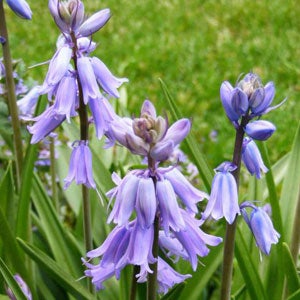The natural world: In search of the Spanish bluebell

Your support helps us to tell the story
From reproductive rights to climate change to Big Tech, The Independent is on the ground when the story is developing. Whether it's investigating the financials of Elon Musk's pro-Trump PAC or producing our latest documentary, 'The A Word', which shines a light on the American women fighting for reproductive rights, we know how important it is to parse out the facts from the messaging.
At such a critical moment in US history, we need reporters on the ground. Your donation allows us to keep sending journalists to speak to both sides of the story.
The Independent is trusted by Americans across the entire political spectrum. And unlike many other quality news outlets, we choose not to lock Americans out of our reporting and analysis with paywalls. We believe quality journalism should be available to everyone, paid for by those who can afford it.
Your support makes all the difference.I'm in the Iberian peninsula hunting for bluebells. My quest is to understand more about the invasive Spanish variety, which is threatening our own bluebell widely said to be Britain's favourite flower by hybridising with it.
The task has been made all the more pleasurable as these bluebells grow in some exquisite places. The downside is that one rarely has time to stop and stare, or to soak up the atmosphere. All that matters is to find the plants, make the measurements, drive to the next dot on the map and when it gets dark hope to find an inexpensive bed, preferably next to a good restaurant.
Dim recollections linger from previous visits: the friendliness of local botanists; spectacular buildings such as the cathedral in Santiago de Compostela; the dizzying chasm that splits the town of Ronda. But as a biologist it's the wildlife that fills my head and captivates me and so here I am again, back in Ja*province, a corner of Spain which, for reasons we still don't fully understand, supports a wealth of plants found nowhere else on earth.
Leaving behind the stunning vistas from the local parador, we drive deeper into the wilderness. The landscape is populated by the rare relatives of plants familiar to British gardeners: violets, daffodils, peonies... and bluebells. But these are very special bluebells which grow only here. Hyacinthoides reverchonii have small, starry-blue flowers tinged attractively with violet.
As we wind ever higher on this remote forested road, other treasures become apparent. At the highest point the wooded pass below Pico Cabañas which lies at 2,026m I'm puzzled by the appearance of the pines, sheltered below the long white hump of its bare, icy summit. They look curiously silvered, as if wrapped in gossamer. I realise that their needles are covered in frost.
Huge drifts of snow allow us to scramble over the tall wire fence erected to keep the goats from grazing the last few plants of a Geranium and an Aquilegia which grow only here. The tiny upturned face of a hoop petticoat daffodil ( Narcissus hedraeanthus) is just emerging from the snow.
On an earlier visit, they carpeted the ground. Perhaps this time we were just too early for the full floral spectacle; reason enough to want to come back again.
Dr Fred Rumsey is the plants enquiries officer for the Identification and Advisory Service at the Natural History Museum's Angela Marmont Centre for UK Biodiversity. The newly opened Centre hosts examples of the Museum's UK Collections and an extensive natural history library. Visitors or wildlife groups can challenge Fred and his colleagues with their unusual wildlife finds. nhm.ac.uk
Join our commenting forum
Join thought-provoking conversations, follow other Independent readers and see their replies
Comments